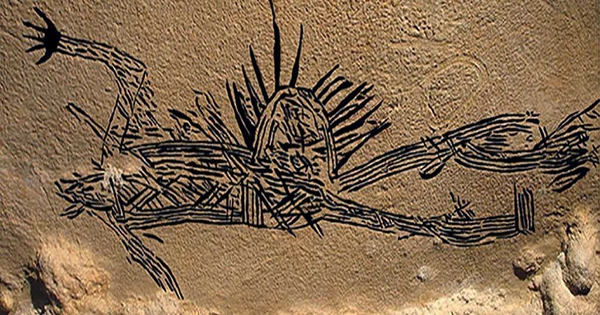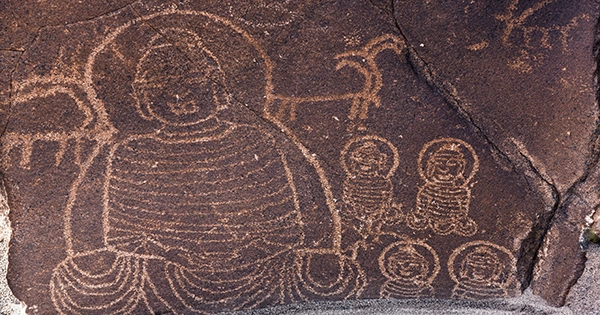Cave art in the Americas is uncommon and typically modest in comparison to some of Eurasia’s massive paleolithic murals, but a recent find indicates an exception. The cave in issue, whose name and location have been kept a secret, has a ceiling covered in pictures, some of which are rather huge, but the height is so low that onlookers have been unable to see them. Archaeologists have uncovered everything by gluing together overlapping pictures, but they have left unresolved the issue of why the painters picked a place where their work could not be viewed and how they maintained their work unified.
The biggest cave paintings in America are found in the southwest. However, research at a location in Alabama known as 19th Unnamed Cave, Alabama, has revealed that the southeast may have a lot more than previously thought. The painting was recreated using 3D photogrammetry, in which each shot strongly overlaps its neighbor to allow reconstructions, and it is explained in Antiquities. Knoxville, University of Tennessee Because the artwork is typically between 0.6 and 1.25 meters (2-4 feet) high, even laying on the ground, the ceiling is too near to observe the larger pieces at one time, Professor Jan Simek and co-authors needed photogrammetry.

The photogrammetrically produced 3D model is far more adaptable. The study adds that “manipulation of the distance between the viewer and the ceiling of the glyph chamber exposes countless human and animal forms that could not be observed in situ due to their size and the viewer’s physical closeness.” The photogrammetry depicts a life-size human figure wearing a ceremonial robe and headpiece and clutching different forms in each hand, among other things. A taller figure, though less fully sketched, likewise looks to be a person dressed in regalia.
The cave ceiling is covered in total by 400 square meters (4,000 square feet), with numerous layers painted over each other in some situations. There is a combination of abstract shapes, animals, and people with human shapes, similar to cave art throughout Eurasia (anthropomorphs). The biggest is a 3.4-meter-long serpent fashioned after the eastern diamondback rattlesnake (Crotalus adamanteus), which is holy to the local Indigenous people. Although some pre-colonial open-air rock art from the southwest is larger than the anthropomorphs, the serpent is the world’s largest single cave painting.
Its location gives the impression that the snake is emerging from a crevice in the rocks, exaggerating its size. The anthropomorphs, according to the report, “are not identifiable figures from ethnographically recorded Southeast Native American traditions.” “They are most likely depicting figures from newly undiscovered religious tales, most likely from the Middle Woodland era.”
Although the art cannot be dated, a piece of charcoal and some river cane discovered on the floor are estimated to be 1,200 and 1,700 years old, respectively. Ceramic sherds discovered there are of a style prevalent 1,000-3,000 years ago in the region. The things were most likely left when the art was created. The fact that the painters would have encountered the same challenges with perspective as spectators is perhaps the most surprising aspect of the work. According to the article, “the creators had to generate the visuals without being able to view them in their entirety.” They were undaunted, though, since the human desire to create art is so great.















